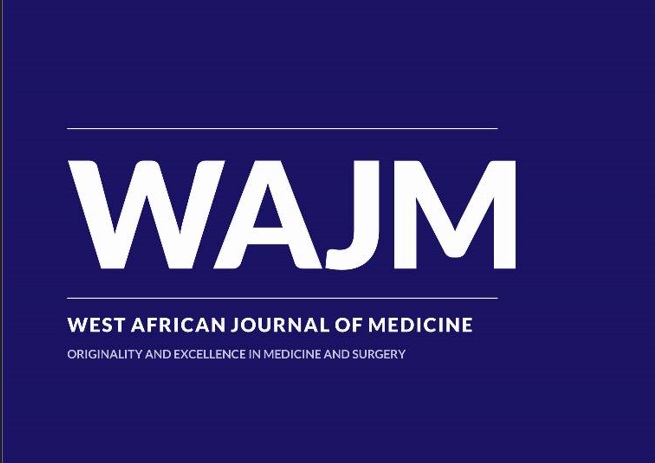ORIGINAL: Spectrum of Manifest Strabismus in A Tertiary Eye Care Hospital in Calabar, Nigeria: Demographics, Types and Co-morbidities
West Afr J Med. 2024 September; 41 (9): 919-926 PMID: 39862386
Keywords:
Calabar, Co-morbidities, Nigeria, StrabismusAbstract
Background: Strabismus is a potential cause of ocular morbidity.
Objective: The aim of this study was to determine the frequency, types of manifest strabismus and co-morbidities among patients attending a referral paediatric ophthalmology and strabismus clinic in Calabar, Nigeria.
Methods: A retrospective review of case-notes of patients attending the paediatric ophthalmology and strabismus clinic from January 1, 2017 to December 31, 2019 was done. Collected data was analyzed using chi square test (or Fisher's Exact Test) and multivariate binary regression. A p-value of <0.05 was considered statistically significant.
Results: Of the 4644 patients reviewed, 169 patients (3.6%) had strabismus during the study period but only 136 (80.4%) met the eligibility criteria for inclusion into this study. Most patients (89.0%) were aged below 16 years. Females (52.2%) were proportionately more. Sixty-three (46.3%) had one ocular comorbidity, 56(41.2%) had two while 16(11.8%) had three. The most common ocular comorbidity was amblyopia (31.6%), followed by hypermetropia (27.7%). Twenty-nine (21.3%) had systemic comorbidities. Sensory and infantile esotropia were the most common types; 35.3% and 32.4% respectively. Others included intermittent exotropia (16.2%) and sensory exotropia (6.6%). Primary strabismus was more common among those aged 16 years and above compared with those aged below 16 years (66.7% versus 57.0%), p=0.475. There were statistically significant relationships between strabismus and cataracts, retinoblastoma, hypermetropia, astigmatism among others. Amblyopia (AOR: 3.339; 95% CI: 1.100-10.131), hypermetropia (AOR: 10.615; 95% CI: 2.393-47.077), and myopia (AOR: 0.109; 95% CI: 0.016 to 0.732) were predictors of strabismus.
Conclusion: The prevalence of strabismus in this study revealed a higher burden than previously reported in Nigeria. Some comorbidities serve as predictors of strabismus, and their presence may aid timely case finding. Treatment of causes of secondary strabismus may reduce the burden of avoidable causes of strabismus and associated visual loss.


